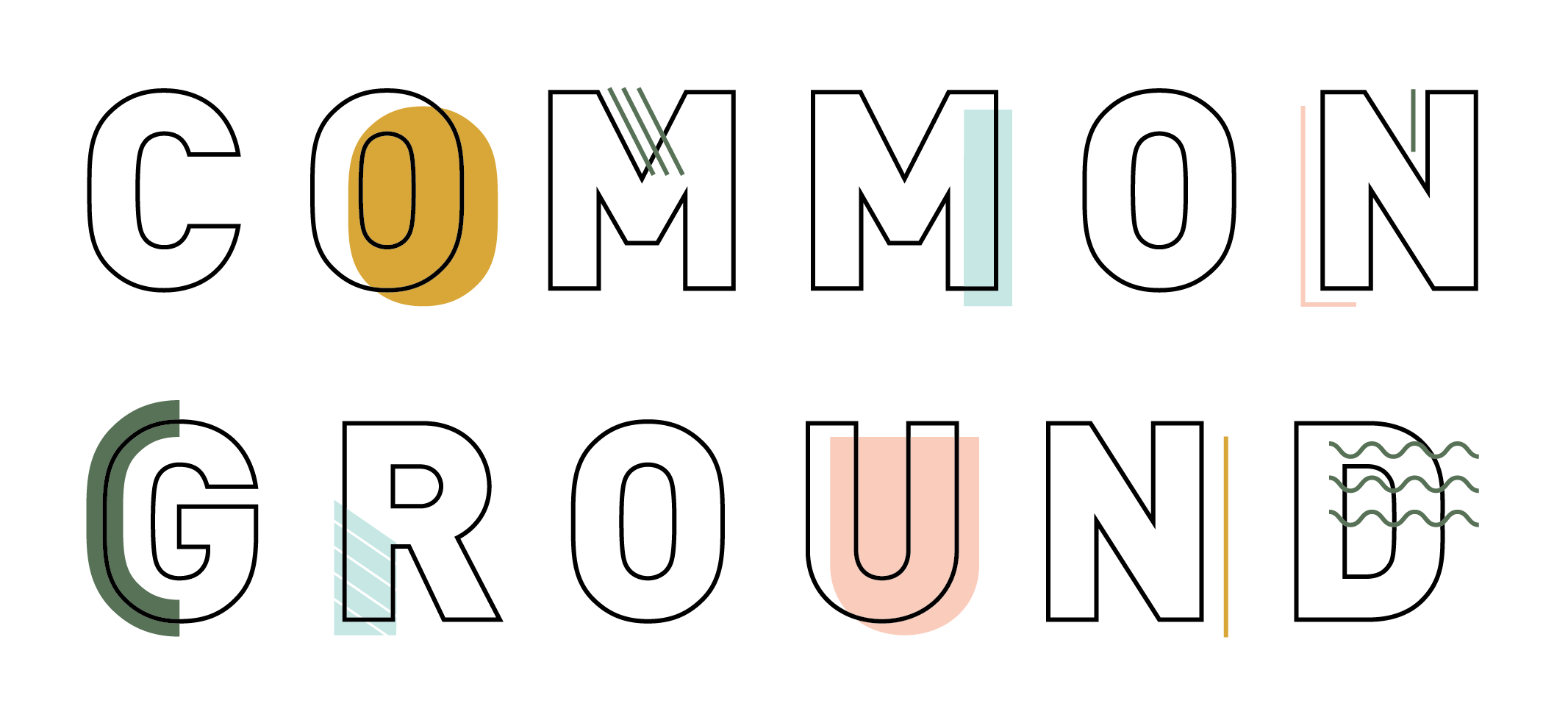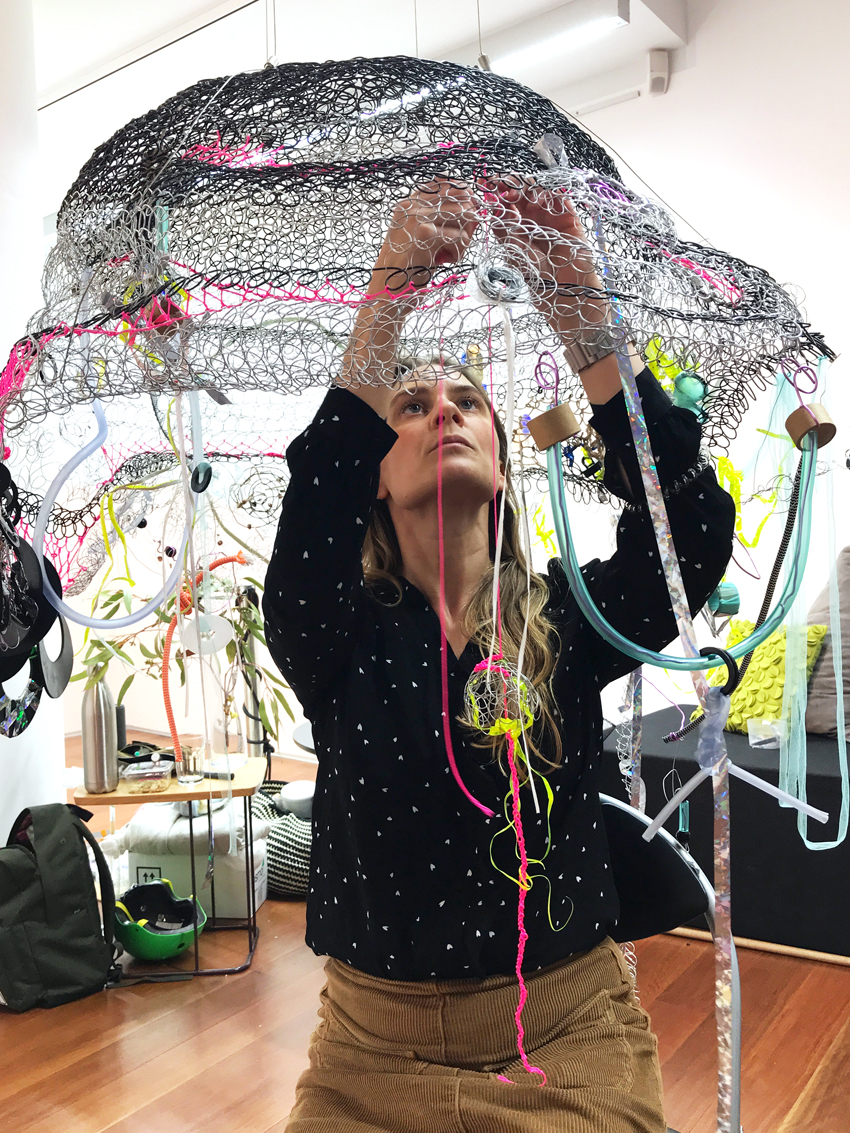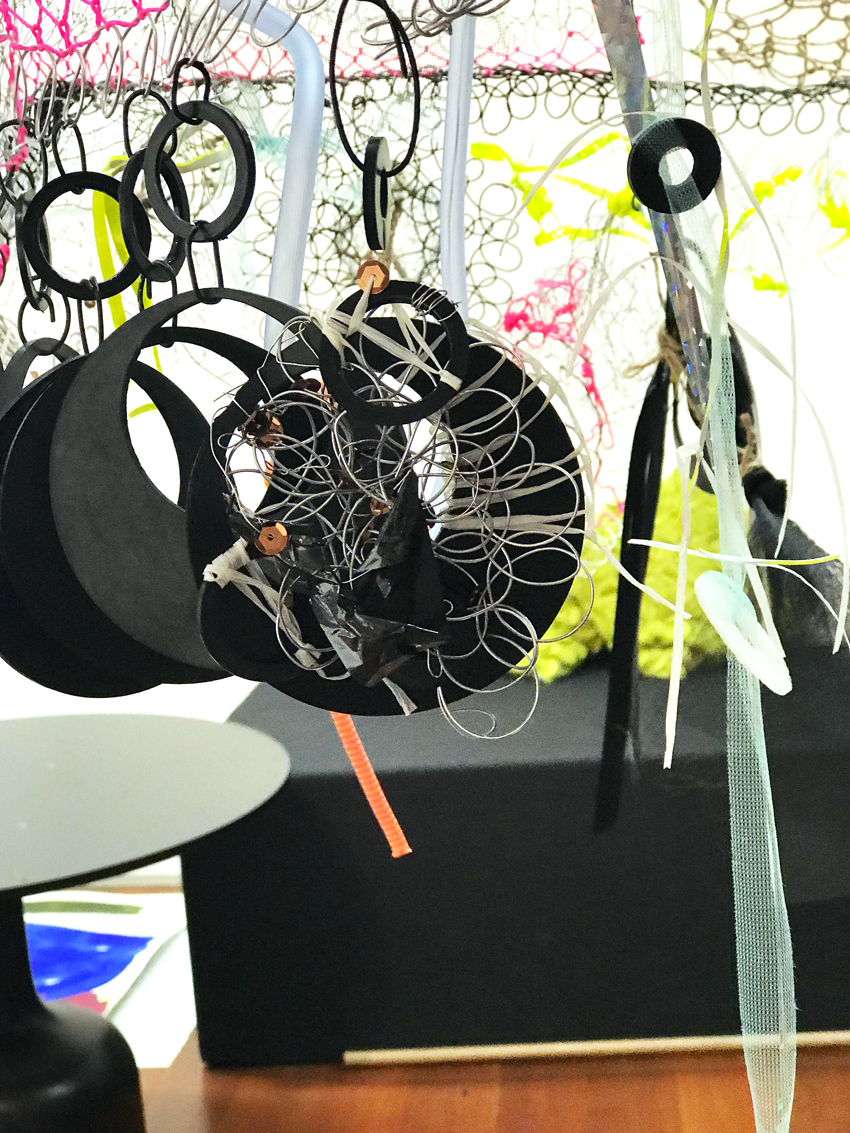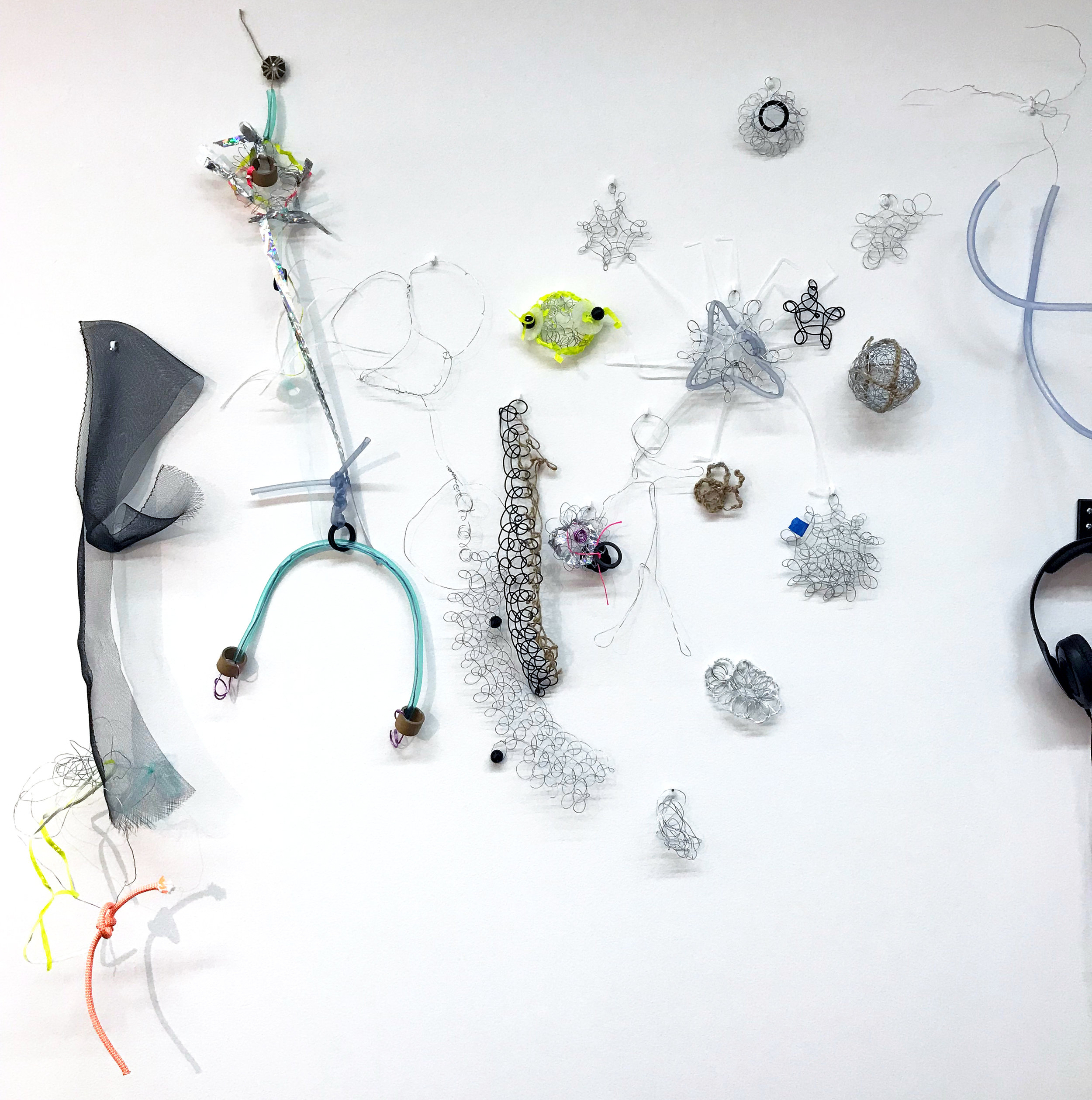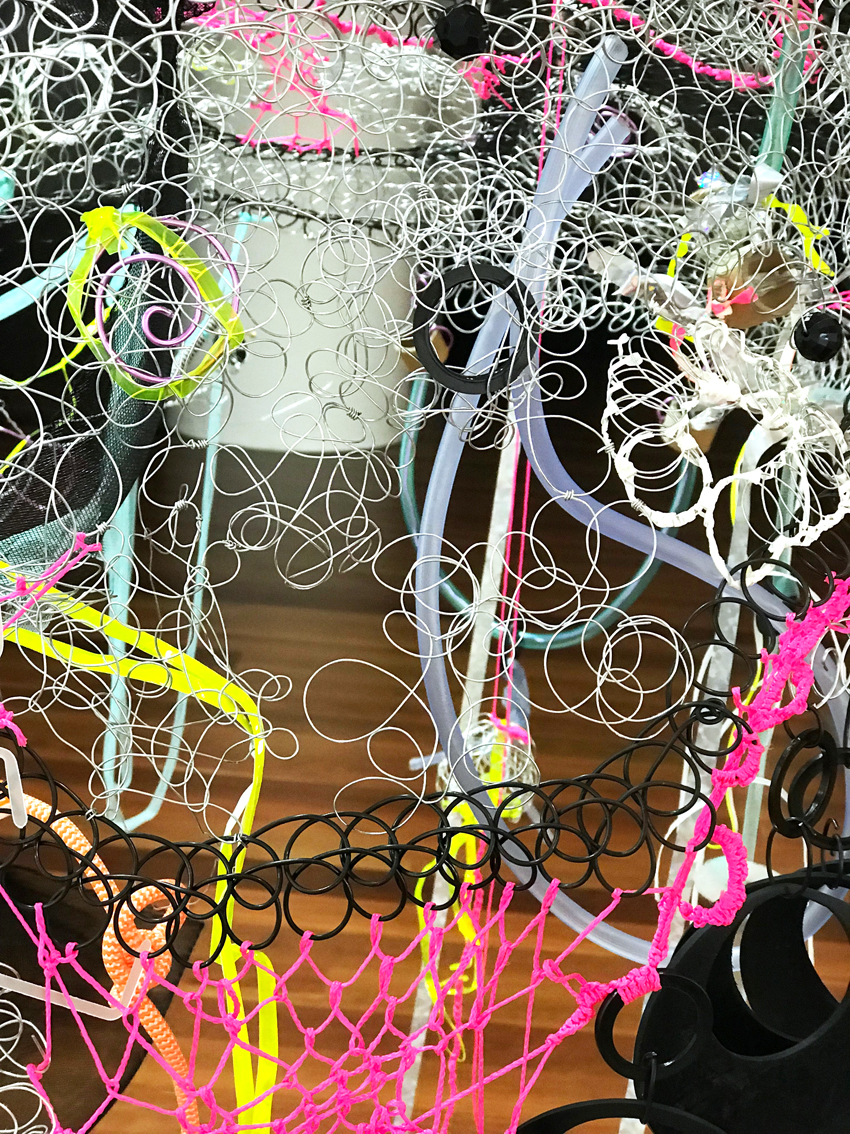The Dax Centre - Community Arts project
Me in front of a mural I painted as part of my residency at The Dax Centre. 2019
I recently completed a residency at The DAX Centre, a gallery and organisation that has a focus on the exploration and expression of mental health through the arts. The residency was part of a larger group exhibition titled STIGMA: dismantled revealed in which seven other contemporary artists respond to the theme of Stigma in relation the Mental Health.
My response to the theme came from an understanding that the stigma associated with what we term ‘mental illness’ serves to disconnect and isolate people and my belief that there is no answer or need to fix what we term ‘mental illness’, but instead subscribe to the possibility of acceptance and a shift in perspective that can be made possible by creating forums for multimodal dialogue and engagement. I believe that stigma can be reduced by building communities where people can connect, share experiences and create authentic relational interactions that embrace transparency without judgement.
My engagement had two distinct purposes, that on a personal level, inherently fed and influenced each other. One was the development of a body of works on paper, reflective of my embodied response to the ecology of my surroundings, the second was a community built installation made of woven metal and found objects, where I invited visitors to the gallery to sit with me and weave together wire and found objects forming small works of art which were then integrated into the larger installation. I chose weaving as a medium for its long-standing cross-cultural connections to community, the way weaving enables us to engage our hands in rhythmic motion, a simple repetitive engagement with the body, the intention being to offer an adaptive way for participants to engage their senses in the present moment and connect with each other through shared experience. By inviting the participation of others into the art-making process I saw the potential to not only weave materials together but also experiences, time and narratives.
As the piece built, the surfaces and the in-between spaces defining and informing the shape and prescience of the piece. There was an invitation to consider the potential of those in-between spaces that we create in relation to others. How that in-between space, the intersubjective space, can only be known in the context of other people and how the fresh dynamics of human interaction can generate different qualities of experience. Different perspectives, and teach us so much about ourselves.
When I consider the terms we are given to use; ‘mental illness’ and ‘mental health’ I’m left with an image of two fixed and opposing terms. Like a binary division, you’re on one side or the other. Yet my view is that Mental Health is extremely heterogeneous - it looks different for everyone. I see that these terms exist at different stages of a continuum, a continuum that we all inhabit, and are frequently moving along in bidirectional ways.
I feel that art can be deeply personal, but is universally relatable. It holds the potential to bring people together in profound ways and express ideas about our shared humanity.
Art allows for the expression of multiple interpretations of the world simultaneously and finding ways to share art helps us understand that we are all participatory sentient beings, who experience the world and make meaning in the context of our connection to each other.
I feel that Art has the capacity to hold, lead and generate new thoughts and connections through the process of creating, as the creative process is naturally imbued with a sense of curiosity. My hope for this residency was to use the art-making process to engage and enhance the curiosity of others, to find a way to connect and share our experiences.
There were over six hundred visitors to the exhibition in the five weeks I spent in residency around sixty of those visitors engaged in this collaborative art-making project and countless others sat with me exploring their experiences through conversation. This work is a recognition of how those multiple voices interlaced and formed a collective experience. It embraces the infinitely variable possibilities of a polymorphic narrative and the relevance of different perspectives on experience.
By weaving together all the works made in small moments with people, I wanted to highlight the way we can communicate as equals, the way this mix enhances us all, in the hope that we can begin to meet ourselves and each other at the edges of our varied and shifting experience with understanding and compassionate acceptance, in the absence of stigma.
“Compassion is not a relationship between the healer and the wounded. It’s a relationship between equals. Only when we know our own darkness well can we be present with the darkness of others. Compassion becomes real when we recognise our shared humanity.”
This work was developed through The DAX Centre Artist Residency Program with the support of the Vizard Foundation.
